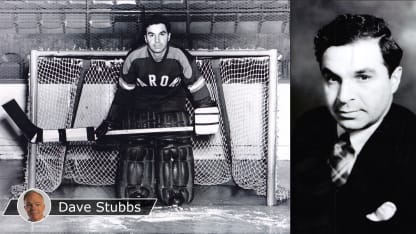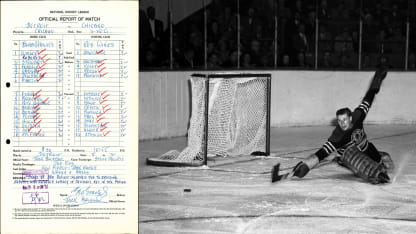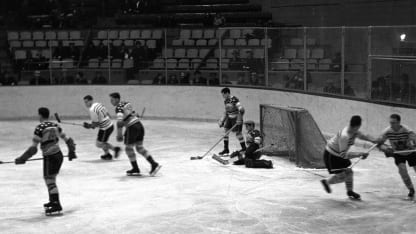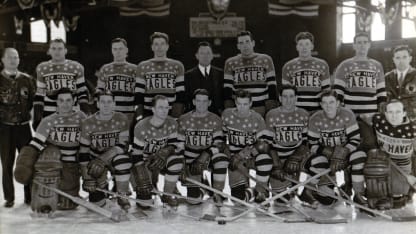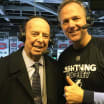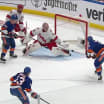The lineups for the Nov. 25, 1951 game between the Chicago Black Hawks and Detroit Red Wings, goalie Moe Roberts penned in beneath Harry Lumley, and Lumley in 1951 action with Chicago.
In going in goal, Roberts set two NHL records:
At 45 years, 347 days of age, he became the oldest goalie to appear in an NHL game, eclipsing the record of Lester Patrick (44 years, 99 days), the coach who appeared in the 1928 Stanley Cup Final in emergency relief for his New York Rangers. Roberts was the oldest player at any position in NHL history at the time, Howe (52 years, six days) and Chris Chelios (48 years, 71 days) having since passed him.
And the 25-year, 352-day span between Roberts' first and last NHL game remains the longest ever for a goalie; it leads Martin Brodeur (22 years, 282 days), Gump Worsley (21, 175), Jacques Plante (20, 155) and John Vanbiesbrouck (20, 129). Three skaters have longer spans: Howe (33, 178), Jaromir Jagr (27, 87) and Chelios (26, 29).
The emergency stint was just one highlight in the remarkable life of Roberts, given name Morris or Maurice, depending on your choice of government certificate.
Born Dec. 12, 1905 in Waterbury, Connecticut and raised in Somerville, Massachusetts, he would become a goalie for the amateur Boston Athletic Association. It was with the Unicorns that Boston Bruins coach and GM Art Ross discovered him, signing him as a practice goalie and stick boy.
Roberts was four days from his 20th birthday on Dec. 8, 1925, probably taping sticks at Boston Arena, when Bruins goalie Charlie "Doc" Stewart, a dentist when he wasn't in the net, suffered a badly slashed leg early in the second period against the visiting Montreal Maroons, leaving to be stitched up with the score 2-2. In went Roberts, who surrendered nothing over roughly 35 minutes in what would be a 3-2 victory.
